Tuesday June 12, 2012
Going the distance for the disabled
THERE may be many disabled-friendly facilities in Universiti Sains Malaysia (USM) but there is still room for improvement, said USM Deputy Vice-Chancellor (Research and Innovation) Prof Asma Ismail.She said there was a special committee to look into accessibility for disabled staff and students in the university.
“But there’s room for improvement.
“We’ll try to have more facilities but it takes time and the budget also comes into consideration,” she said.
She was officiating at the Disability Equality Training workshop at USM’s School of Social Sciences recently.
Prof Asma added that the understanding gained from the workshop would certainly give an accurate picture of the needs of physically challenged students and staff in the university.
“It will enable the university to prepare a plan to improve access for the disabled as much as possible,” she said.
“Although this group is a minority in USM, their presence contributes to the success of the university,” she added.
The workshop was initiated by a disabled undergraduate from the School of Social Sciences, Khu Li Fang, 29.
It was aimed at providing awareness on the facilities required for the disabled.
In his presentation, workshop facilitator Peter Tan Hua Choon said that around 10% of the world’s population or 650 million people lived with a disability.
The workshop also discussed topics such as independent living, approaches and processes, as well as drawing up an action plan to resolve problems faced by disabled people.
Tag: Universiti Sains Malaysia
Disability Equality Training (DET) At Universiti Sains Malaysia
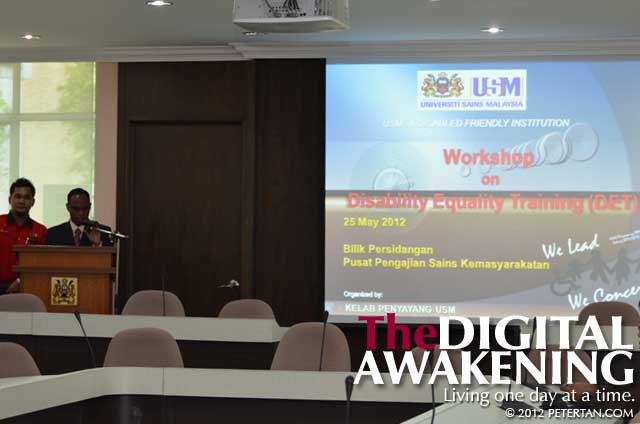
Disability Equality Training Workshop at the School of Social Sciences Conference Room (C06), University Sains Malaysia.
Photo by Wuan.
The Kelab Penyayang of Universiti Sains Malaysia (USM) organised a Disability Equality Training (DET) Workshop in Penang on May 25. It was held at the School of Social Sciences Conference Room (C06). The participants comprised lecturers from the various faculties, hostel supervisors, staff from the Registrar Department, Rehabilitation Centre, Hospital USM, Sports and Recreation Centre, Student Affairs and Development Section, Doping Control Centre, Sejahtera Centre, Legal Office, and students, among others. Naturally, I felt nervous to be facilitating such a preeminent group of people from the academia for a full day of DET.
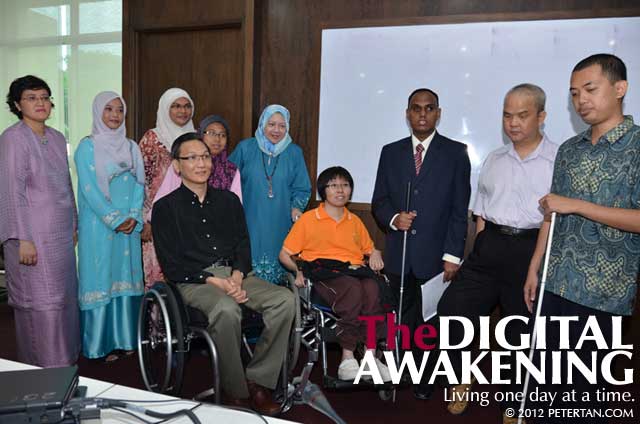
(L-R) Senior Lecturer Dr. Azlinda Azman, Project Director Zarith Izaini, Acting Dean Dr. Nor Malina Malek, Peter Tan, Siti Shafia Binti Subrai, Deputy Vice Chancellor Professor Asma Ismail, Khu Li Fang, Ruvindiran Mohan, Tutor Mr. Ooi Hock Thiam and Mohd Aziz Bin Abidin
Photo by Wuan.
Deputy Vice Chancellor (Research and Innovation) Professor Asma Ismail kicked off the workshop with a speech on how USM, being the Apex (Accelerated Programme for Excellence) university, is striving towards making the campus more accessible for disabled students and also staff of the university, namely the main campus, Engineering campus and also the Health campus. At the same time she also acknowledged that there is still room for improvement with regards to accessible facilities within the campus.
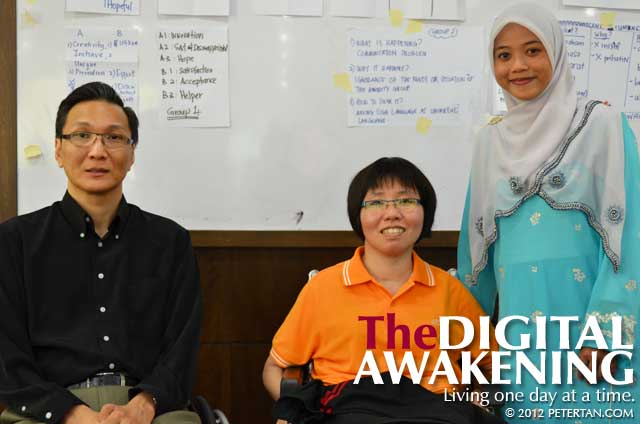
(L-R) Peter Tan and the organising team – Khu Li Fang and Zarith Izaini.
Photo by Wuan.
In that one-day DET workshop, participants were facilitated through sessions on perspectives of disability, problem solving, Independent Living, the Social Model of Disability and action plan making. The presentation of the action plans was the most fulfilling session of the workshop as the four groups came out with simple blueprints to make their respective workplaces accessible within six months. Kudos to Project Director Zarith Izaini and her associate Khu Li Fang for initiating this workshop to promote understanding of disability issues and winning over new allies as change agents to make the university more inclusive.
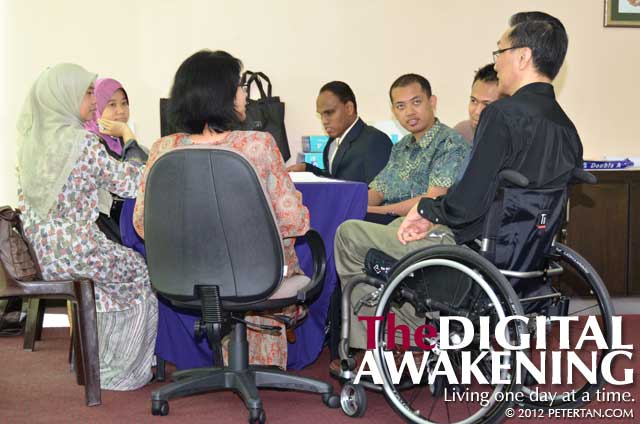
Group 2 discussing their DET action plan making with Peter Tan.
Photo by Wuan.
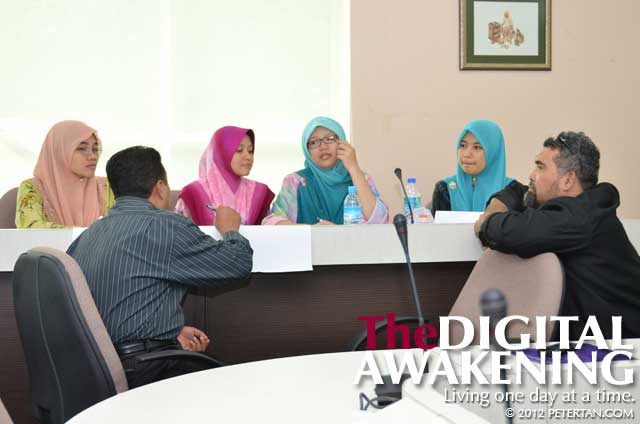
Group 5 busy drawing up their DET action plan to make their work place accessible.
Photo by Wuan.
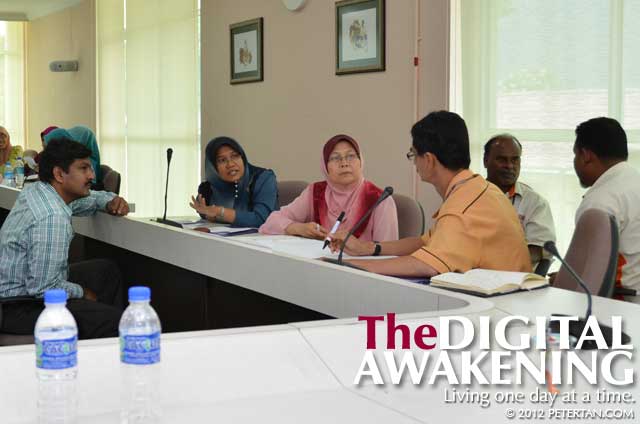
Group 3 deep in discussion on making the USM Sports Centre accessible.
Photo by Wuan.
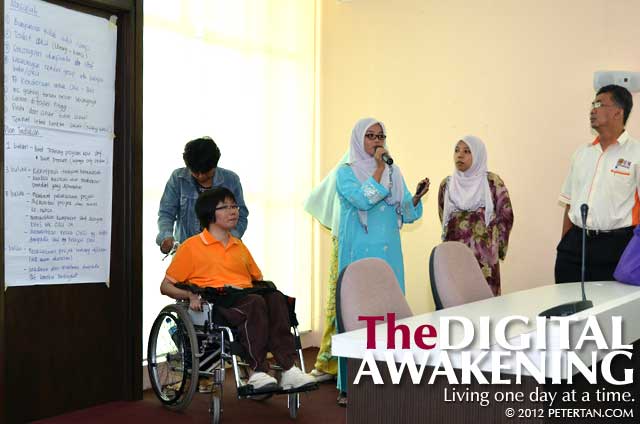
Group 1 presenting their DET action plan.
Photo by Wuan.
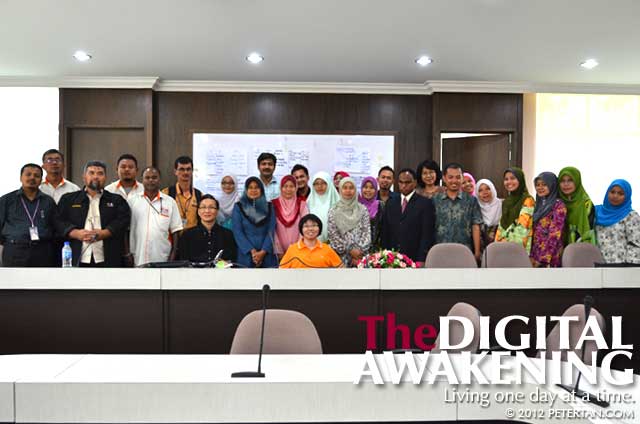
Group photo after the Disability Equality Training Workshop at Universiti Sains Malaysia
Photo by Wuan.
The Cushion Disaster That Nearly Was
My trip to Penang to conduct the Disability Equality Training (DET) workshop at Universiti Sains Malaysia almost turned into a disaster. As always, whenever we travel up north from Kuala Lumpur to Penang, Wuan and I will make a stop in Ipoh to break the monotony of the long journey.
We went to pick up Wuan’s parents for lunch with us. At the restaurant car park, as Wuan was setting up the wheelchair for me, we realised that we had left the wheelchair cushion behind in Kuala Lumpur. I use two cushions of different thicknesses, the thinner Supracor Stimulite Sport when I am at home and a thicker Supracor Stimulite Classic XS when I am out and about.
The wheelchair was customised to be used with a cushion. Without one, my posture would be affected. It would be very uncomfortable and considering the long hours that I would be in the wheelchair at the workshop, there was a possibility of getting pressure sores on the buttocks as well. The first inclination was to make the 2-hour drive back to Kuala Lumpur for the cushion after lunch and then drive all the way to Penang. I estimated that we would arrive at the hotel in Penang at around 10pm.
The other option was to look for a cushion in Ipoh. There are no Supracor Stimulite dealers in Malaysia. I had to bring both of mine in from the USA. The next option was to get the ROHO, an air-filled cushion that I have pressure-mapped at the hospital with favourable results. I am not too fond of this cushion though because the air pressure has to be constantly monitored and being air-filled, there is always the issue of it springing a leak, more so when we are living with cats with sharp claws.
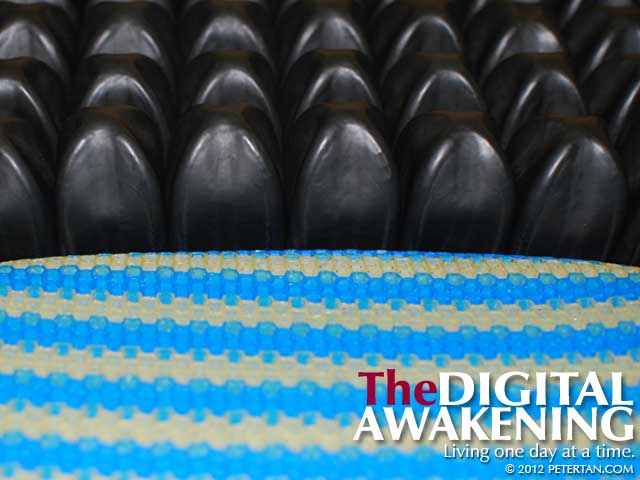
Top – Roho Quadtro Select High Profile. Bottom – Supracor Stimulite Classic XS.
The good thing about using a smartphone is that I could access the Internet to look for the address of Lifeline Innovators, a medical and rehabilitation equipment dealer, that I knew had a branch in Ipoh. I was surprised that for a shop that deals with rehabilitation equipment especially wheelchairs, it did not have a ramp to the shop. The helpful staff had to carry me in my wheelchair up three steps to the five-foot way and another step into the shop. It is ironic that while they sell enabling gears, they are also the source of disablement with the non-existent accessible facilities for disabled customers visiting the shop. The management of Lifeline Innovators should seriously look into this issue.
I wanted the Roho Quadtro Select Mid profile but they did not have my size. The staff let me test the Quadtro Select High Profile instead. I was seated rather high and felt wobbly and unstable. The good thing about this cushion is that the air can be released for better positioning. It felt more comfortable after some adjustments.
So, after haggling over the price, I parted with RM1,300 for the cushion and continued with our journey up north, praying that nothing else would go wrong after that. Considering the situation, it was a small price to pay. The decision to buy the Quadtro Select, although not as comfortable as my Stimulite Classic XS, was the better choice as opposed to driving all the way back home to pick the cushion up or the possibility of getting a pressure sore that could take months to heal sitting without the cushion.
